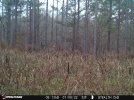bigboreblr
5 year old buck +
Has anyone been comfortable with certain weeds in your areas / plots? OR even embraced or added them?
I have a spot with goldenrod, but goldenrod is in the aster family. I know grouse and pheasant like it and have seen deer eat it. Plot in mention is newly added this past spring, no spraying before establishment though. Maybe 10% is goldenrod. I planted oats, turnips, and clover there and did not mow due to the turnips kept growing there in the summer. Thinking of mowing as control. Might gly and maybe keep it a clover spot for another year, wait till spring comes to see what it looks like.
I have planted plantain and collected crabgrass seed to put in the parking area / cabin lawn. The snowshoe hares love it.
Hate to call it a weed, but blueberries can be a problem for me too. Don't want to mow them down for a food plot. to go there...........Easy to eliminate if needed, open space is limited where my lease is as is what is allowed for me to do on there, aka no clearing of trees. open spots are open territory, but can be used by loggers for a convenient log landing. A real joy to see on your usta food plot after a 200 mile trip.......
I have a spot with goldenrod, but goldenrod is in the aster family. I know grouse and pheasant like it and have seen deer eat it. Plot in mention is newly added this past spring, no spraying before establishment though. Maybe 10% is goldenrod. I planted oats, turnips, and clover there and did not mow due to the turnips kept growing there in the summer. Thinking of mowing as control. Might gly and maybe keep it a clover spot for another year, wait till spring comes to see what it looks like.
I have planted plantain and collected crabgrass seed to put in the parking area / cabin lawn. The snowshoe hares love it.
Hate to call it a weed, but blueberries can be a problem for me too. Don't want to mow them down for a food plot. to go there...........Easy to eliminate if needed, open space is limited where my lease is as is what is allowed for me to do on there, aka no clearing of trees. open spots are open territory, but can be used by loggers for a convenient log landing. A real joy to see on your usta food plot after a 200 mile trip.......


